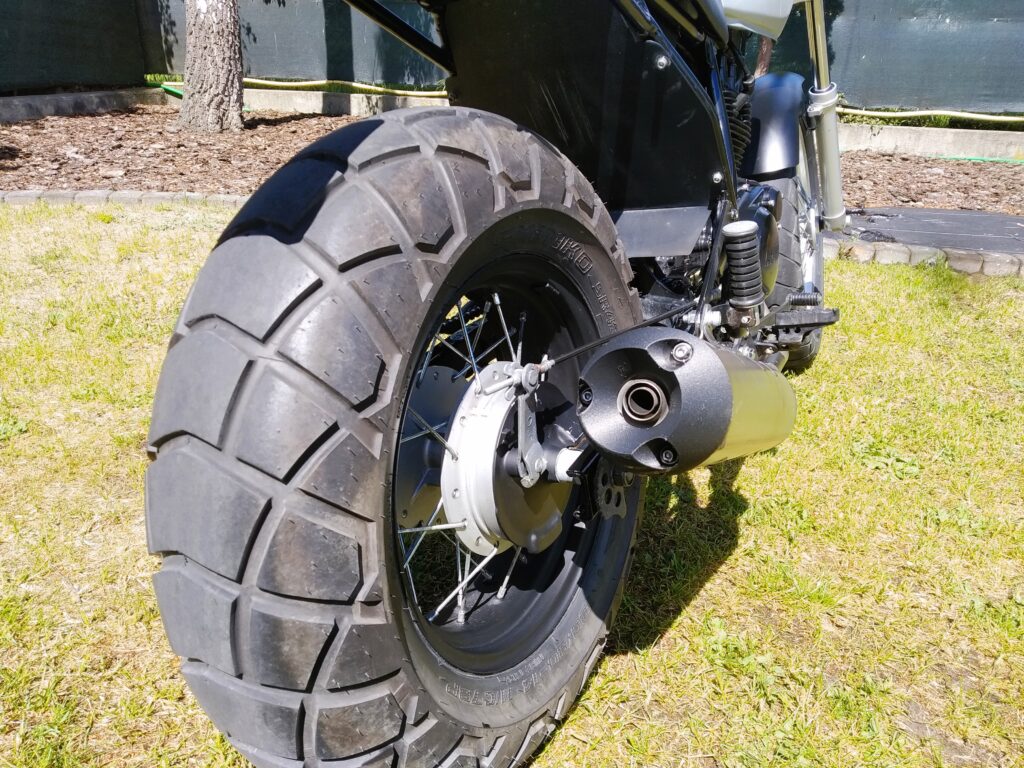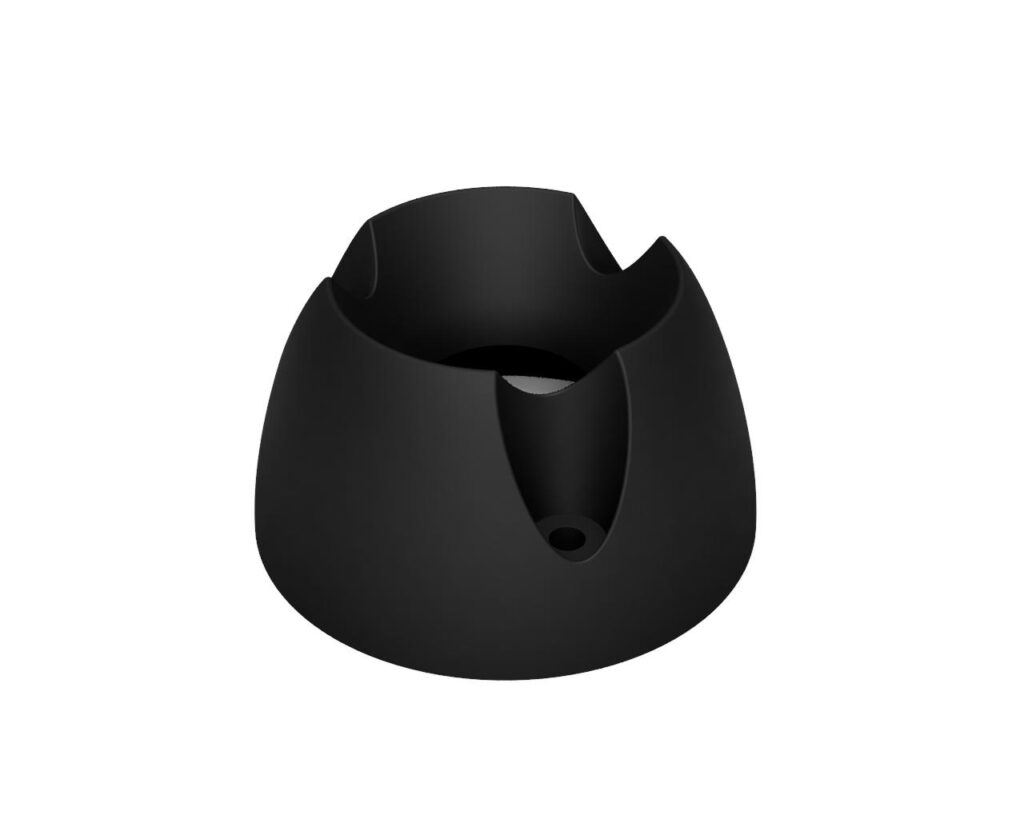
The custom made, cone style exhaust on my Yamaha Trailway motorcycle although very good looking proved way too loud for everyday use. I had to make a decision to replace it. I managed to find a deal for a genuine, used Yamaha muffler from a different model. It was damaged, but also quite inexpensive so I decided to try and fix it.
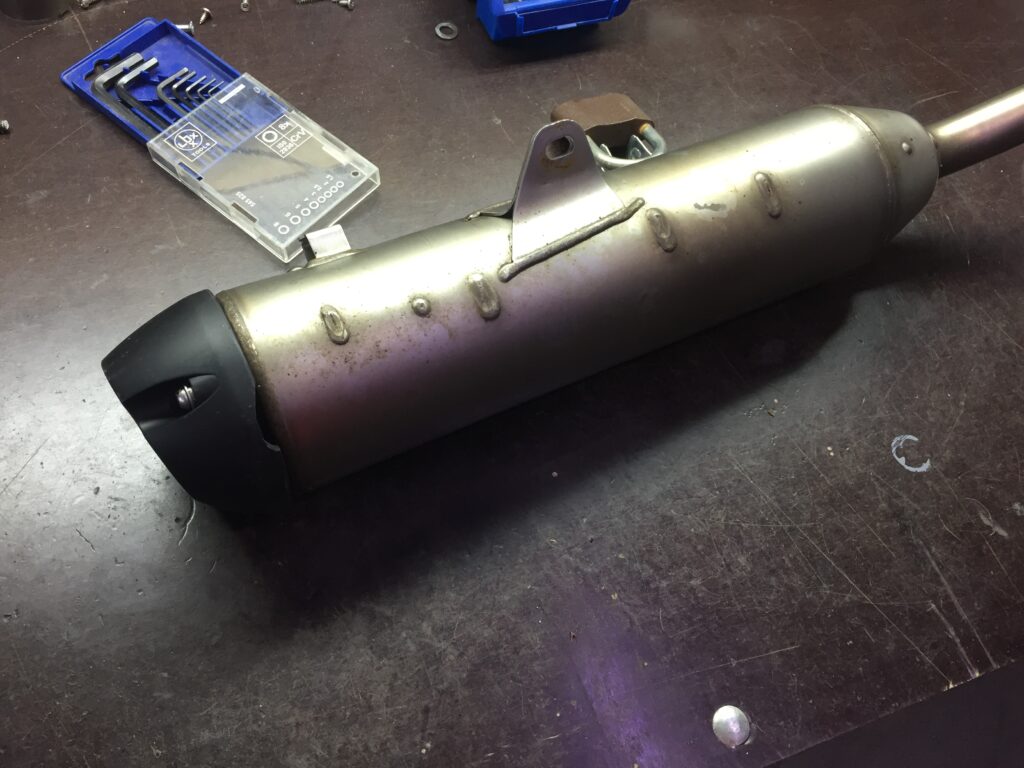
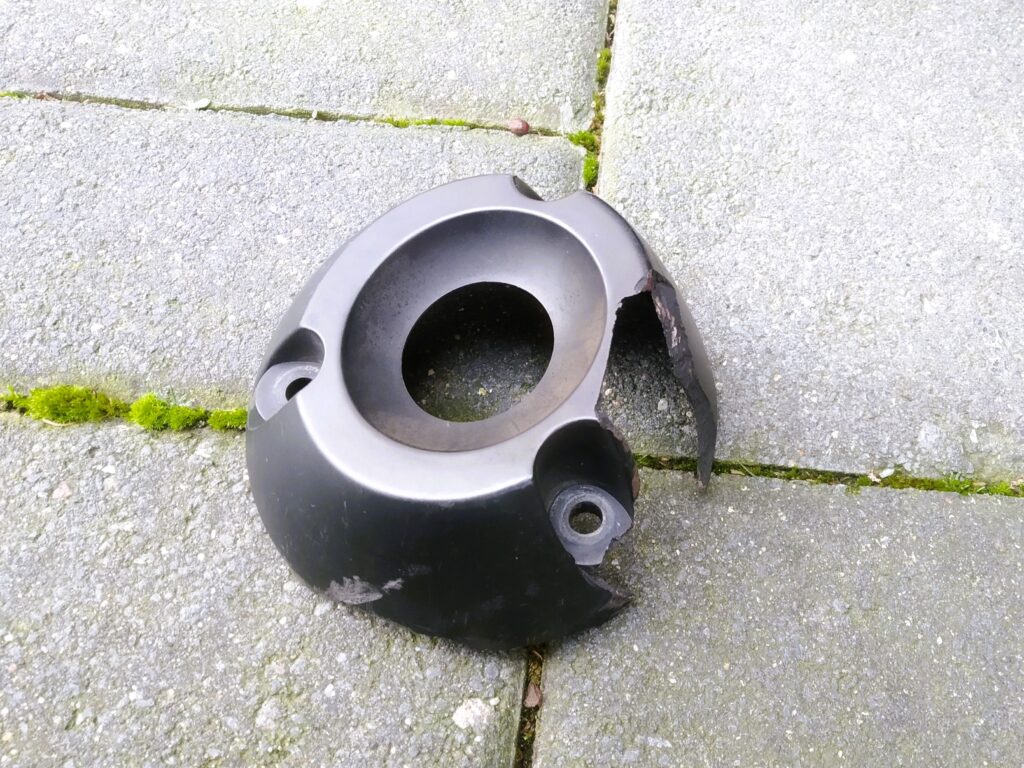
On closer inspection it fortunately turned out that the only damaged part of the exhaust was the end tip. At first I considered recreating the part 1:1. This type of part could be recreated in CAD from scratch. Although 3D scanning or photogrammetry would definitively make the reverse-engineering much easier.
After some though I decided to have a little more fun with it and design something of my own. I would still have to work within the bounds set by features such as hole spacing or exhaust outer diameter, but that still left a lot of room to create something new.
The entire design was done with no support of 3d scanning, the only tool used was a caliper. I started by measuring the diameters as well as distances between holes. With those measurements defined within a sketch in Fusion 360 I had a base to work of.

I experimented a little with the general shape as well as curved and sharp edges. This was one of the first prototypes printed in natural color ABS material. The prototype allowed me to test the fitment of the part and get a feel for how it looks.
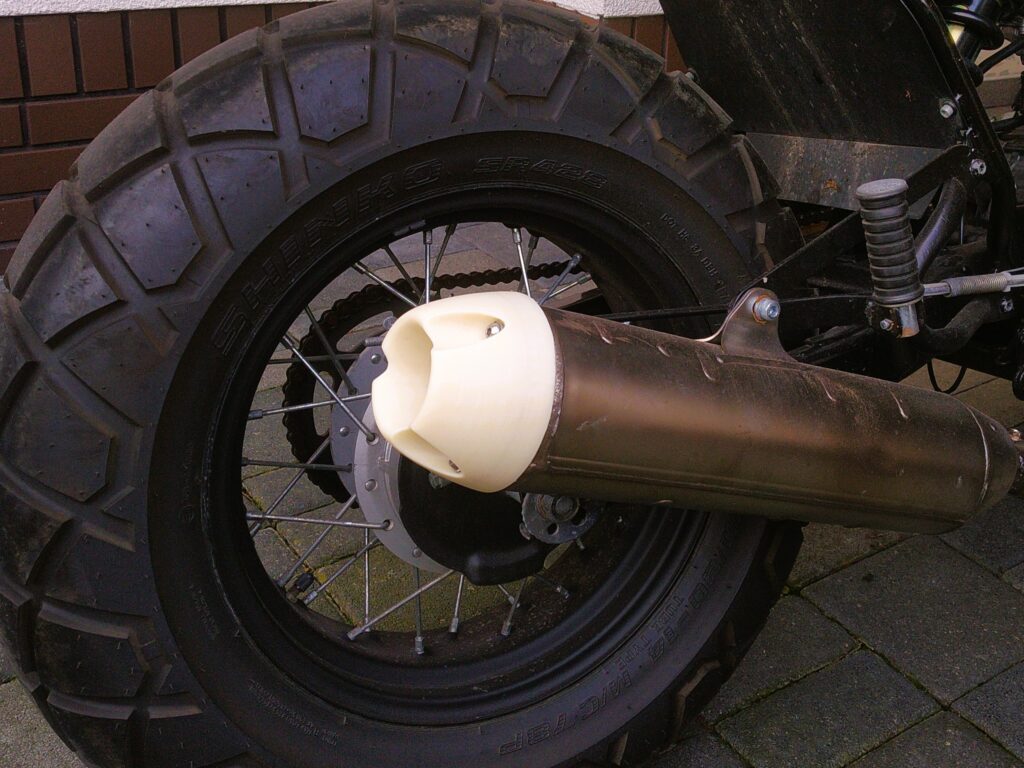
A this point I decided to make the design edges a bit sharper. Some hole spacing measurements were also adjusted for better fitment. The design was pretty much ready at this point.
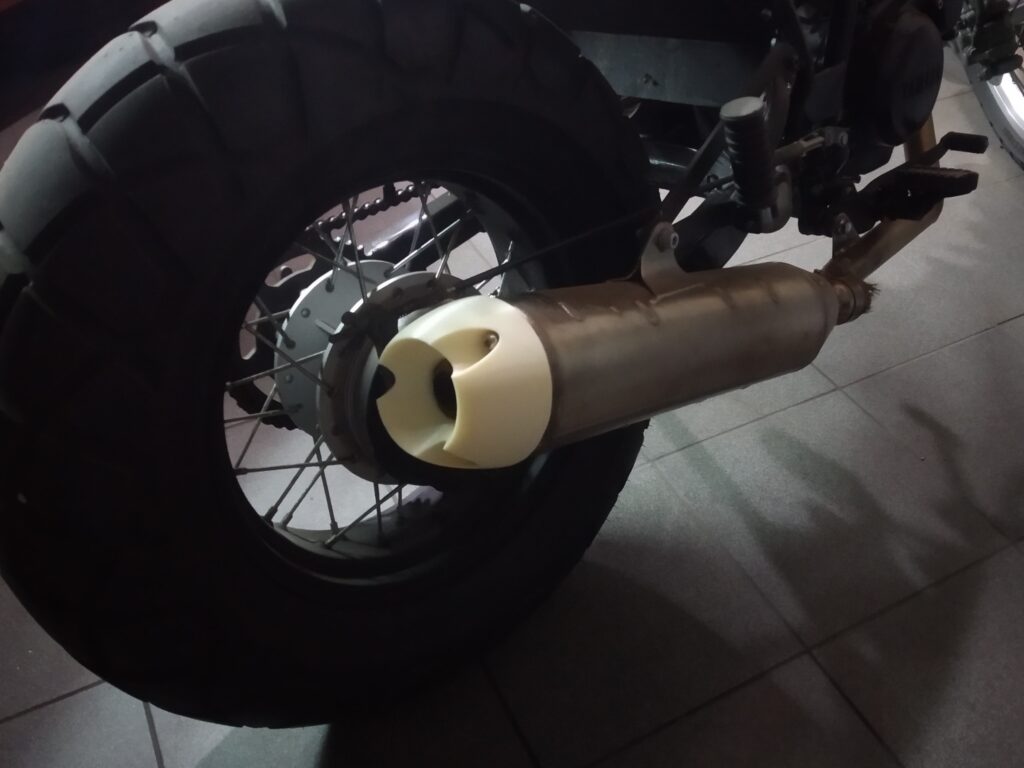
Now came time for manufacturing which wasn’t an easy choice. The prototypes were printed in ABS, which was perfectly fine for initial testing but I highly doubted would survive a prolonged exposure to heat. The original part was likely made out of PTFE (Teflon) or a similar high temperature resistant plastic. Due to it’s characteristics, PTFE cannot be printed in an FDM process. Other high temperature resistant thermoplastics such as PEEK require very specialized 3D printers. I also considered other manufacturing methods such as CNC milling, but as I do not have a CNC machine the cost for such a part would be prohibitively expensive. Ultimately I decided to print the model in carbon fiber reinforced nylon (PA12). With up to 160°C of temperature resistance it had a good chance of surviving these condition while also being reasonably easy to print.

The model was printed with a small amount of support structures on an enclosed FDM machine. Similar to the original part, the new end tip is mounted on special, insulating spacers to limit the heat transfer from the exhaust to the plastic part. After over 2000 km done from the installation I can now safely say that the part is doing just fine 🙂
